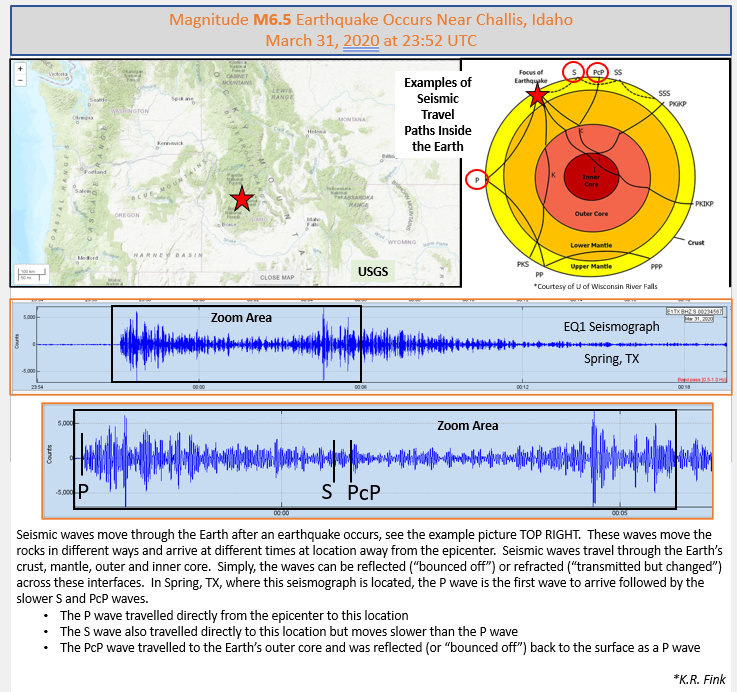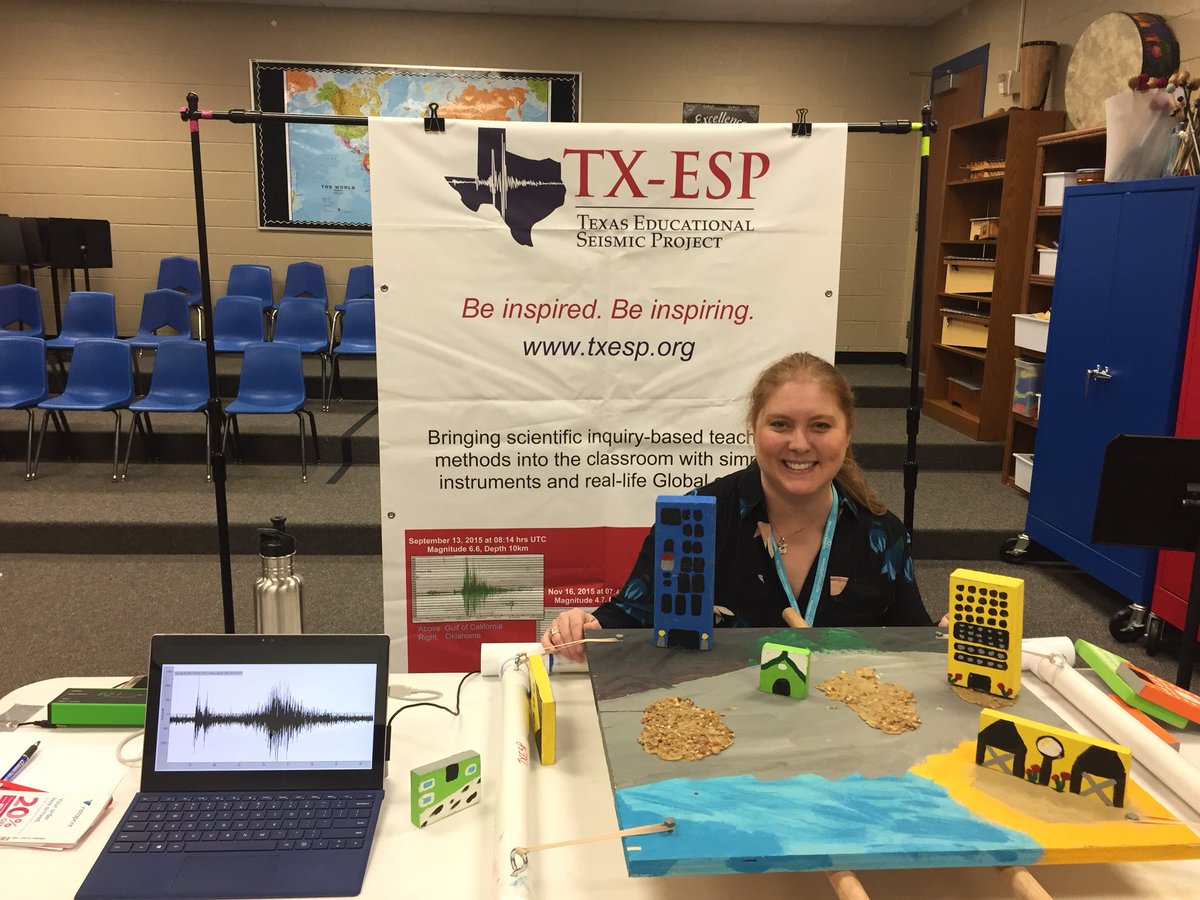Texas Educational Seismic Project
Be Inspired. Be Inspiring.
Public Feedback Needed
About the STEMM OPPORTUNITY ALLIANCE
Last year, the White House held a summit announcing the launch of the STEMM Opportunity Alliance, the initiative to ensure STEMM equity by 2050. SOA is uniquely positioned to answer the Administration’s call and bring about fundamental, systemic change.
Learn more at https://stemmopportunity.org/about-us.
@Stemm Opportunity Alliance has been working hard this year to craft a national strategy framework to guide all members of the #STEMM community, from private and public sectors and across industries, toward a more equitable and inclusive future. We’re proud to work with our cross-sector partners to enact systemic change to close the opportunity gap in our STEMM ecosystem.
This is where you come in: We are looking for public input on the national strategy framework to close the opportunity gap in our STEMM ecosystem. The 30-day public comment period opens today, and we want to hear from as many stakeholders as possible. Help us create a stronger and more equitable #STEMM ecosystem by providing written or verbal input here: https://stemmopportunity.org/open-comment
Nominate for STEM
NOMINATIONS OPEN: Texas Stand Up for STEM Awards
The Texas Girls Collaborative Project annually awards the Stand Up for STEM Awards to recognize and elevate the work of incredible mentors, companies and organizations within Texas. Award nominations are open now and close on Monday, October 9, at 12:00 p.m. noon Central Time. Awardees and nominees are recognized during the TxGCP Texas Women and Girls in STEM Summit. Self-nominations welcome.
· Stand Up for STEM Mentor Award for a STEM Professional engaged in mentoring women and/or girls in STEM
· Stand Up for STEM Educator Award for a STEM Educator engaged in mentoring women and/or girls in STEM
· Stand Up for STEM Collegiate Award for a STEM College Student or Student Group/Organization engaged in mentoring women and/or girls in STEM
· Stand Up for STEM High School Award for a STEM High School Student or Student Group/Organization engaged in mentoring women and/or girls in STEM
· Stand Up for STEM Corporate Award for a Company engaged in mentoring women and/or girls in STEM
· Stand Up for STEM Educational Organization Award for an Educational Organization or Program engaged in mentoring women and/or girls in STEM
Learn more at https://www.txgcp.org/standupforstem
High School students needed!
National Girls Collaborative Project Youth Advisory Board Applications Now OpenWe are pleased to announce that applications are now open to join NGCP Youth Advisory Board (YAB) for the 2023-2024 school year. The YAB is a collective of high school students from diverse regions and backgrounds who have a passion for STEM. The YAB’s mission is to provide input on current NGCP initiatives and inform the future direction of NGCP. Applications to join the board will open on September 6, 2023. Deadline to apply is October 6, 2023.
Scholarship Opportunities
Deadline: August 31, 2023
The Society of Aviation and Flight Educators (SAFE) works to create a safer aviation environment by supporting aviation educators with mentoring opportunities, educational resources, and other benefits; inspiring professionalism through promotion and recognition of excellence and enhanced education; representing aviation educators through interaction with the aviation industry and government; and promoting learning in all areas of aviation for everyone at every level.
SAFE invites applications for its K-12 Classroom Teacher Grant program. Through the program, four grants of $250 each will be awarded to K-12 teachers to incorporate aviation-themed lessons into the regular curriculum. An individual teacher or a group of teachers from the same school may apply to design an aviation-themed classroom unit or complete an aviation-themed project. For example, a SAFE grant could be used to pay for a bus and admission fees for students visiting an aviation museum, take a field trip to the local airport, buy materials to build a balsa wood glider or model rocket or fund another type of project with an aviation or aerospace theme.
Any credentialed teacher in a public, private, or charter school or a group of teachers from the same school can apply for a grant. Local STEM coordinators and homeschooling cooperatives may also apply.
For complete program guidelines and application instructions, see the Society of Aviation and Flight Educators website.
Million Girls Moonshot
From One, To Many, For All: Building a Community for Indigenous Mathematicians – read more about building equity and inclusion for all in #STEM: https://bit.ly/3WnHK5B
Career Girls is a comprehensive video-based career exploration tool for girls featuring diverse women STEM role models. It’s free to use and contains 16,000 videos, as well as career quizzes and resources. Check it out: https://bit.ly/46myCTe
Want to know more about being a good #mentor? Learn from a panel of speakers including dynamic professionals in STEM who currently serve as mentors and the female students they are mentoring: https://bit.ly/3NQa9Pa
Brokering Youth Pathways: A #Toolkit for Connecting Youth to Future Opportunity shares ways in which various out-of-school educators and professionals have approached the challenge of brokering. Check it out: https://bit.ly/3KwOslM
Polar STEAM Educator Opportunity
Educator Opportunity: Polar STEAM
Polar STEAM is recruiting educators for 2024/25 collaborations with polar researchers in creating educational resources about polar regions and science. This opportunity is open to community college and minority-serving institution faculty, middle and high school educators, and informal educators. Learn more at the informational webinar on August 11, 2023. Applications are due September 24, 2023.
FREE earth science activities – get ready for earth day april 22nd
TXESP is a BIG supporter of PBS’ Hero Elementary and PBS Kids Science programming – check out these NEW, FREE activities to get ready for Earth Day 2023 – so much fun!
flashback to idaho, march 31st 2020
Flashback to a large M6.5 IDAHO earthquake from 2020… this one caught us by surprise! Here’s a good Teachable Moment from the Central USA. #whatsthatwiggle
upcoming STEM events in Houston – come out and have tons of fun!!


April 7, 2023 – 12th Annual Women Are FIRST in Texas Networking Social. The Women are FIRST Networking Social Event is held as a sub-event to the FRC State Championship/ UIL State Championship at the George R. Brown Convention Center in Houston, Texas Friday, April 7 from 2-3:30 pm. The event is for young women (9th -12th grade) participating in FIRST Robotics Competition programs and it provides an opportunity for young women to learn more about STEM careers from women in STEM professions. This year’s topic is “Charged Up for STEM”. Women are still underrepresented in STEM college and career pathways. The panel will discuss ways to unlock the power of careers in Science, Technology, Engineering and Math.
https://firstintexas.org/event/first-in-texas-frc-state-championship-at-grb/
APRIL 22ND, 2023 – girlStart’s Houston STEM Extravaganza is a great way to celebrate Earth Day with free, fun, hands-on STEM activities. Explore solar energy as you melt a marshmallow, engineer a pinwheel powered by the wind, design a kite out of recyclable materials, and more! All ages and genders welcome.
https://girlstart.org/event/stem-extravaganza-citycentre/
How Often Do Earthquakes Occur?
Courtesy of iris (now earth consortium)
Earth is an active place and earthquakes are always happening somewhere. In fact, the National Earthquake Information Center locates about 12,000-14,000 earthquakes each year! This fact sheet illustrates information on the frequency of earthquakes of various magnitudes, along with details on the effects of earthquakes and the equivalent energy release. On average, Magnitude 2 and smaller earthquakes occur several hundred times a day world wide. Major earthquakes, greater than magnitude 7, happen more than once per month. “Great earthquakes”, magnitude 8 and higher, occur about once a year.
Keypoints:
- Earthquakes are always happening somewhere.
- For each step up in magnitude the annual number of earthquakes decreases (roughly) by a factor of 10.
- For each step up in magnitude an earthquake releases 30 times more energy.
- While the number of earthquakes that can be detected and located each year has been increasing, this doesn’t mean that the annual average number of earthquakes has increased.


this image can be found here –>> https://www.iris.edu/hq/inclass/uploads/fact_sheet3b.jpg







You must be logged in to post a comment.